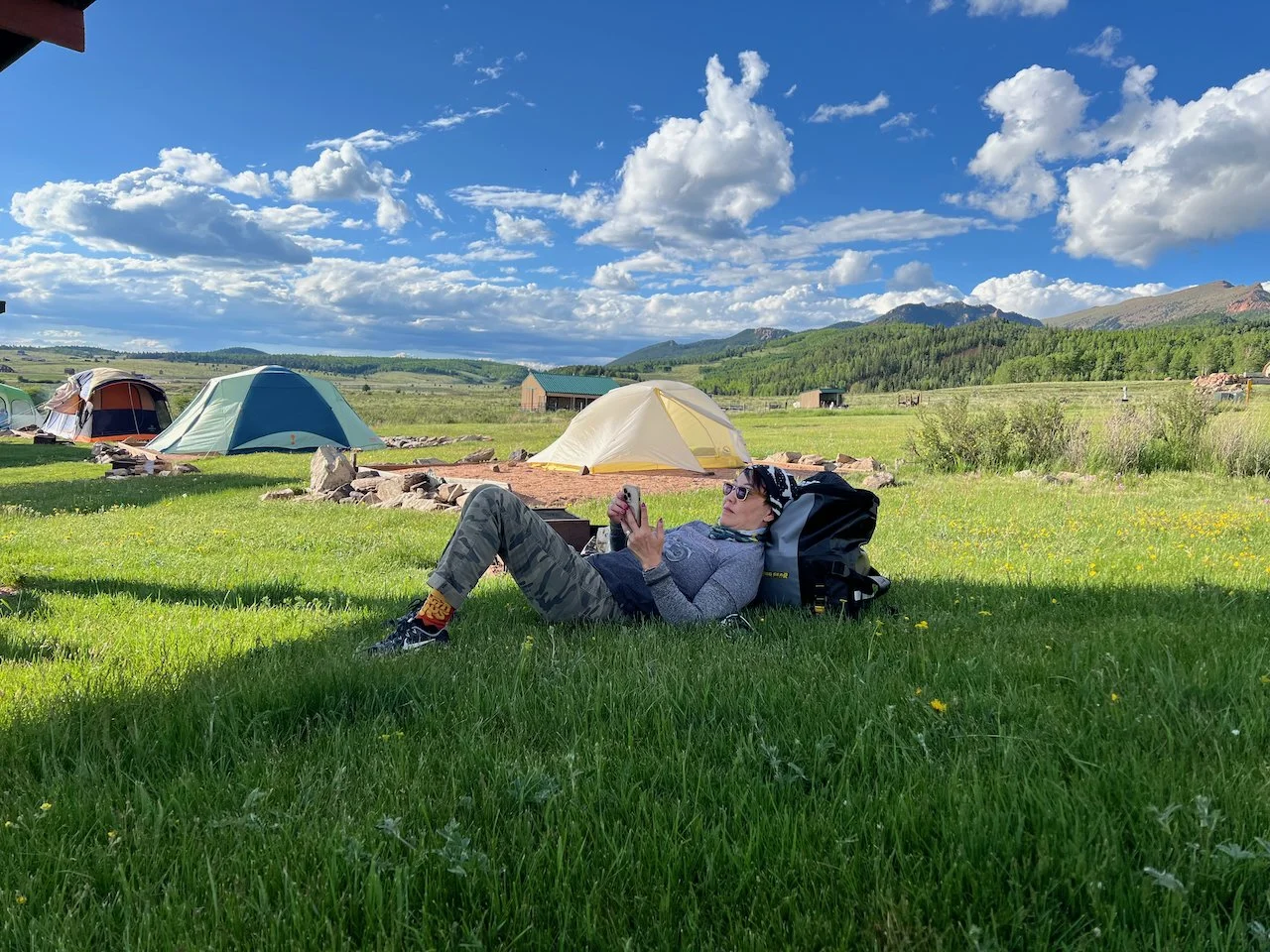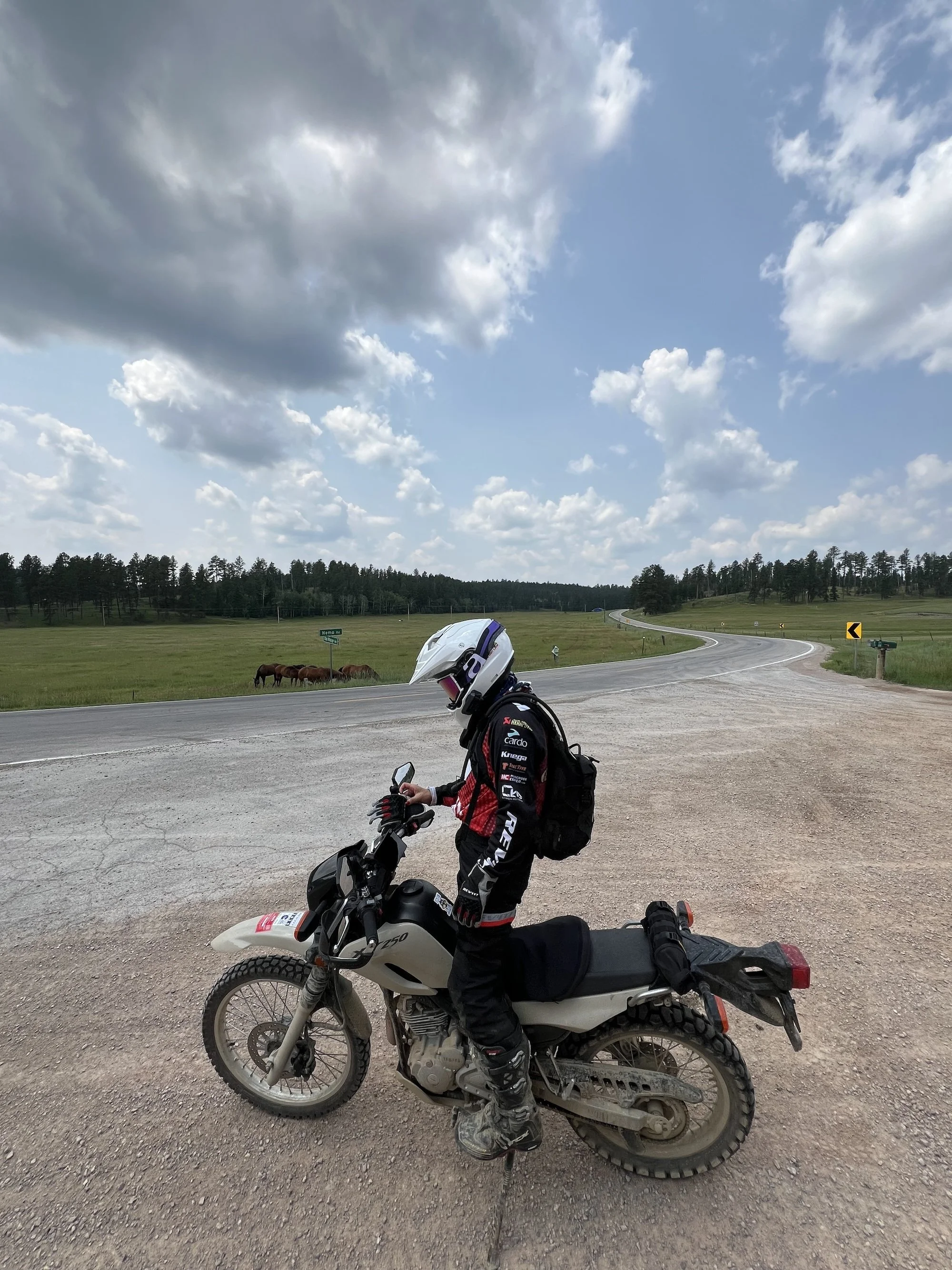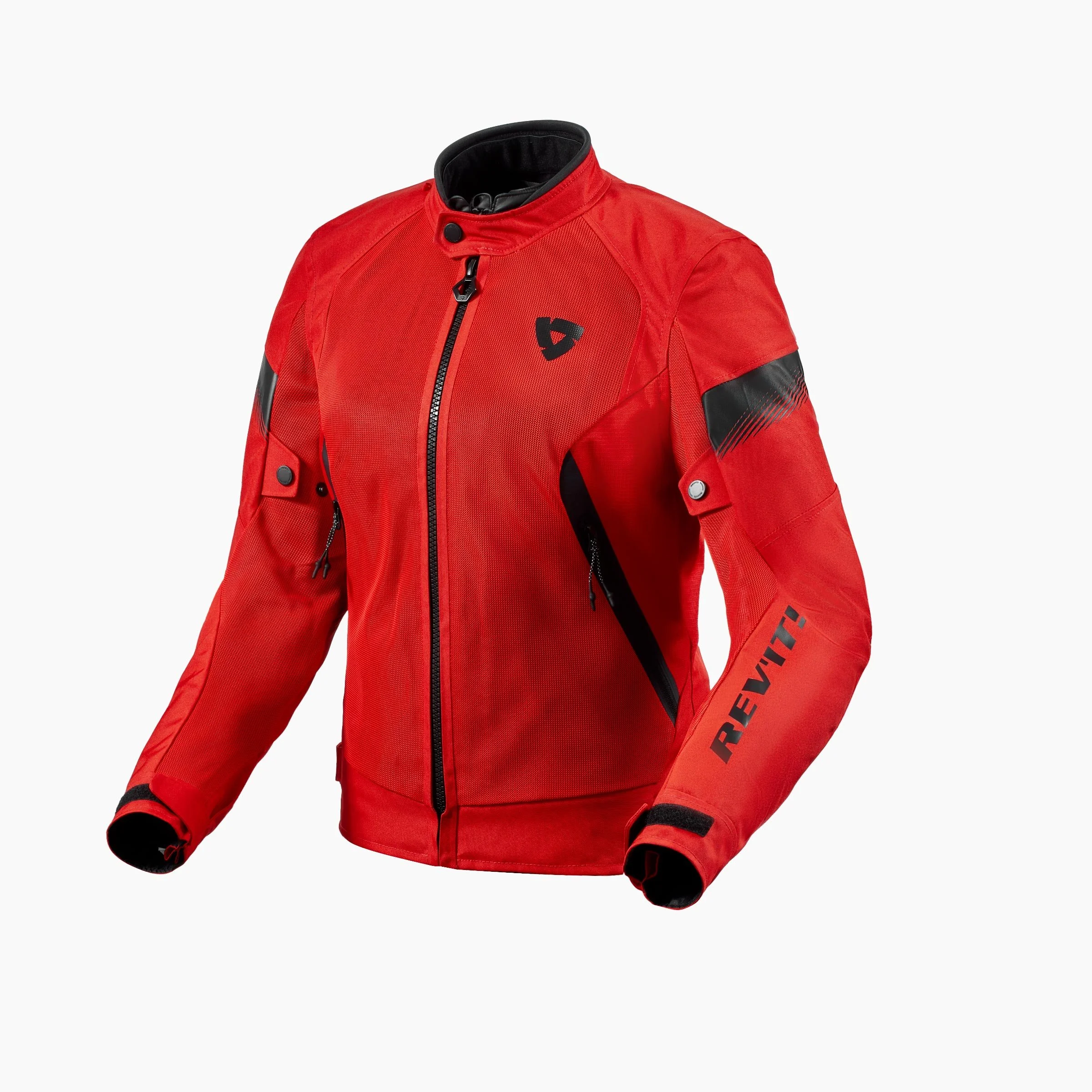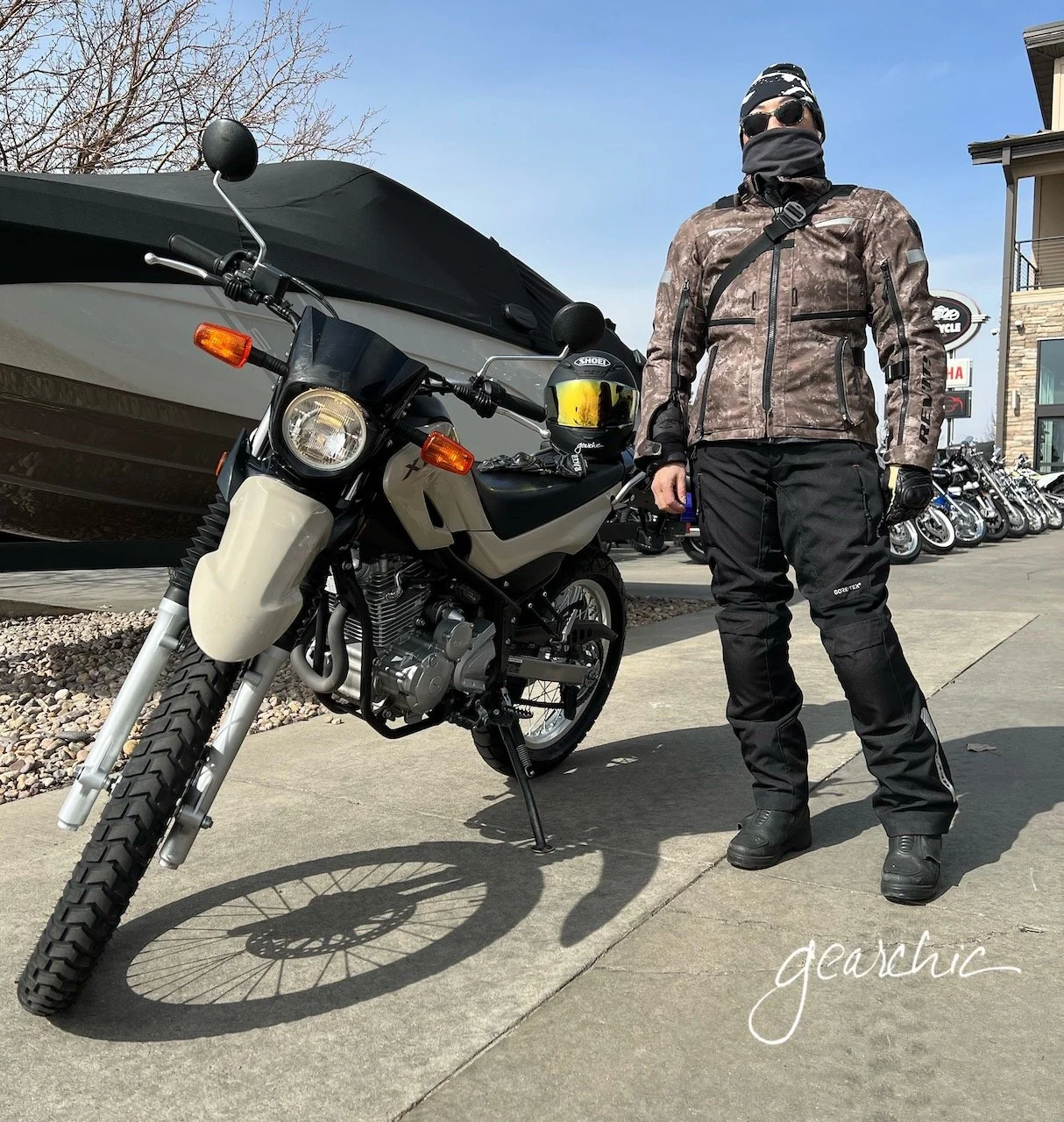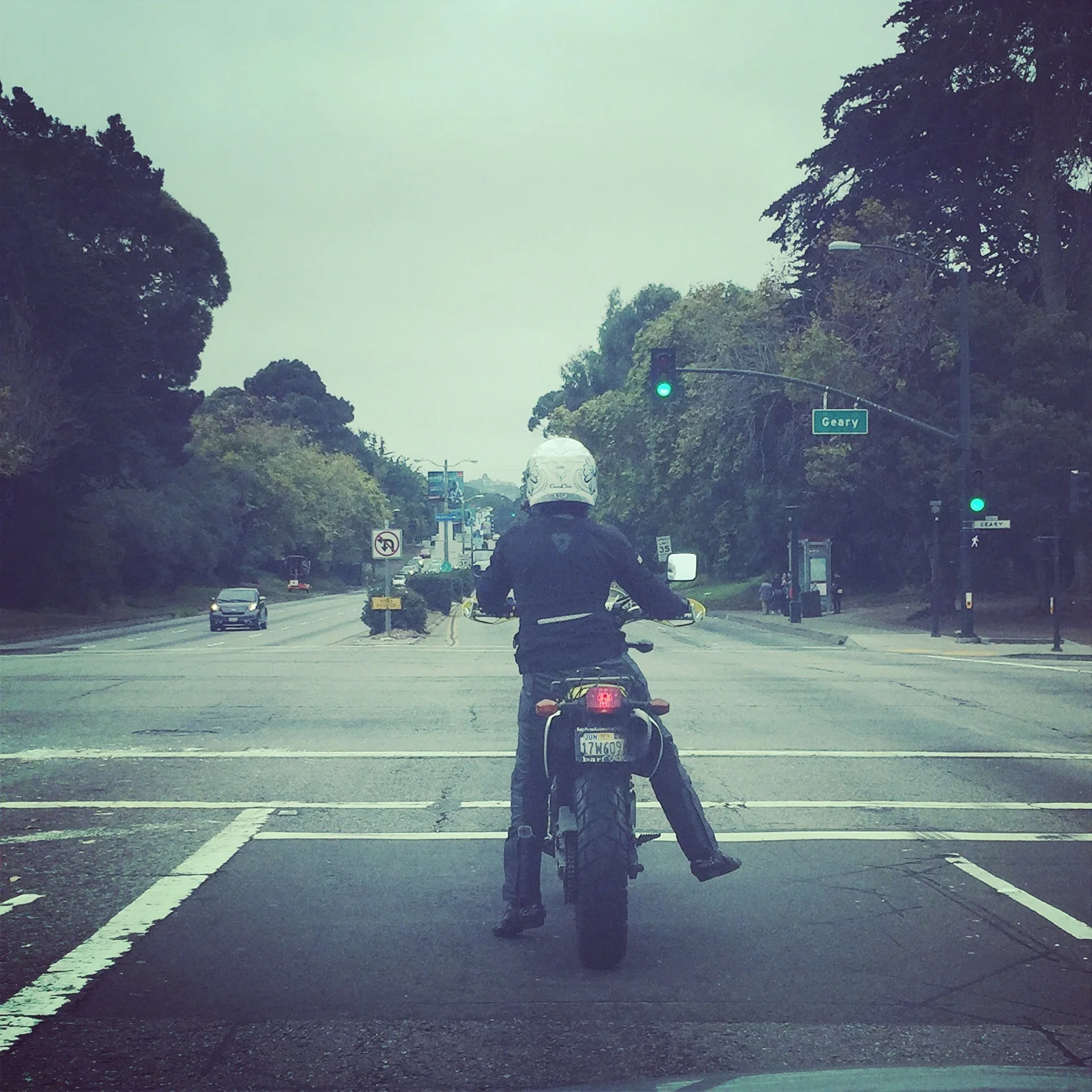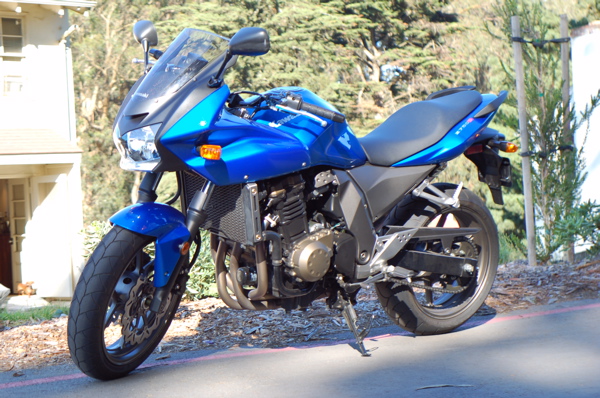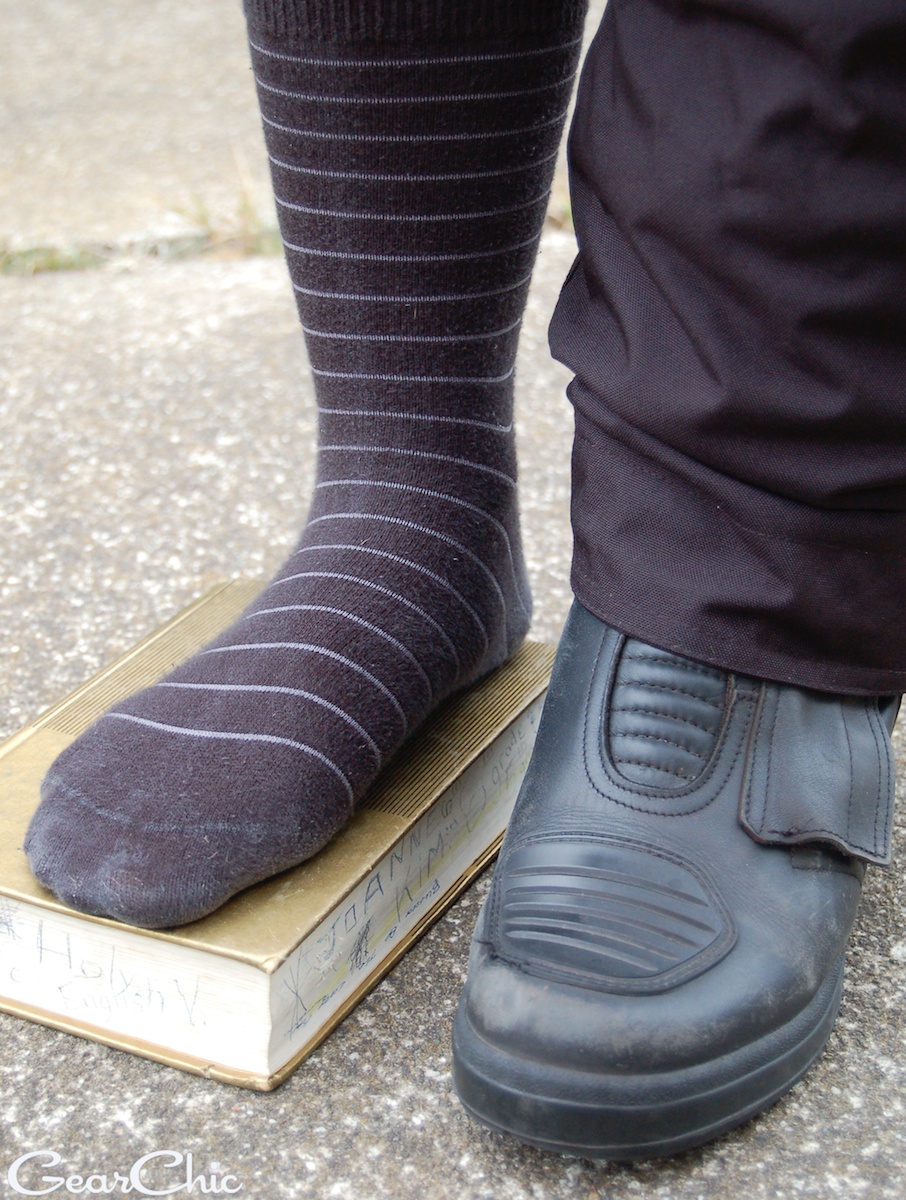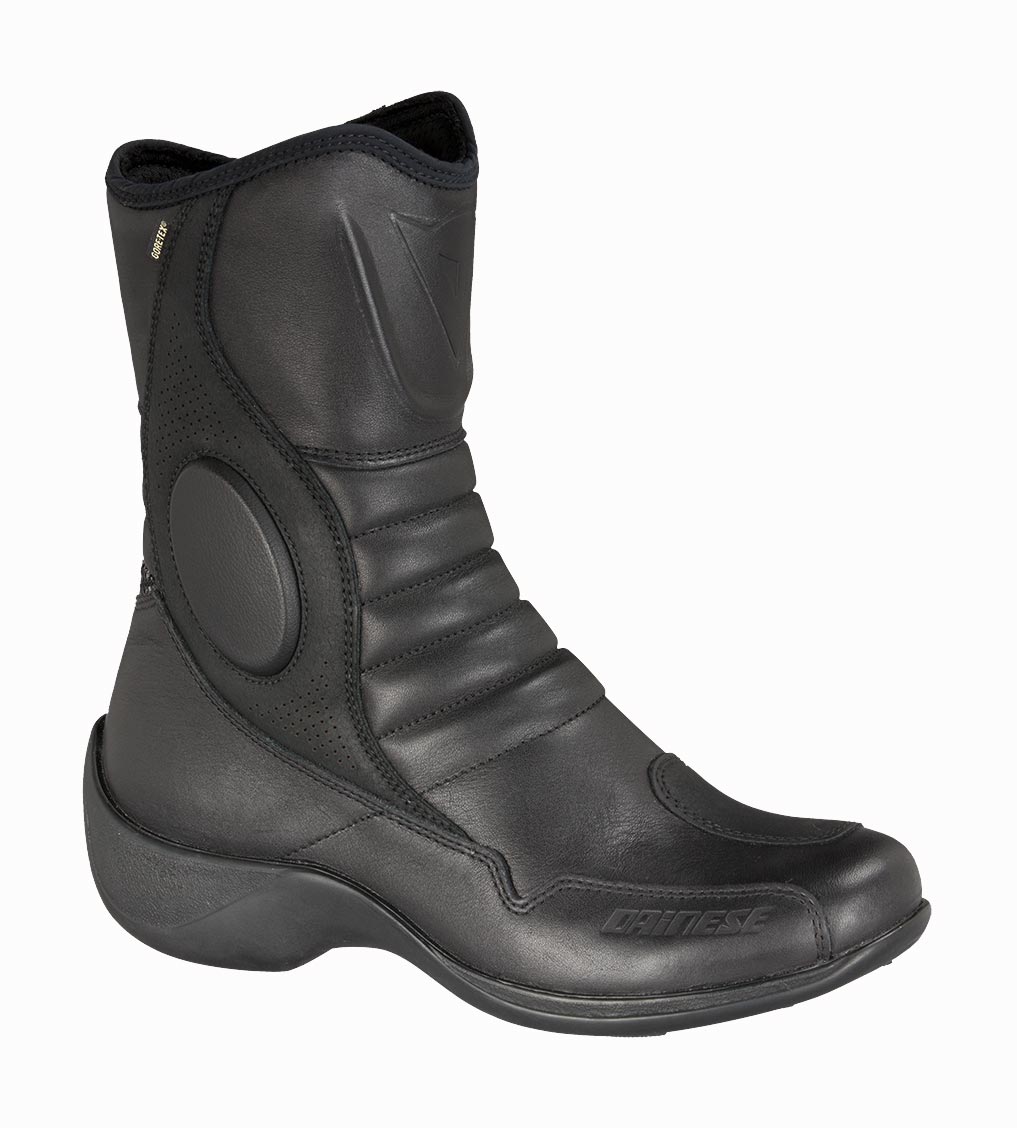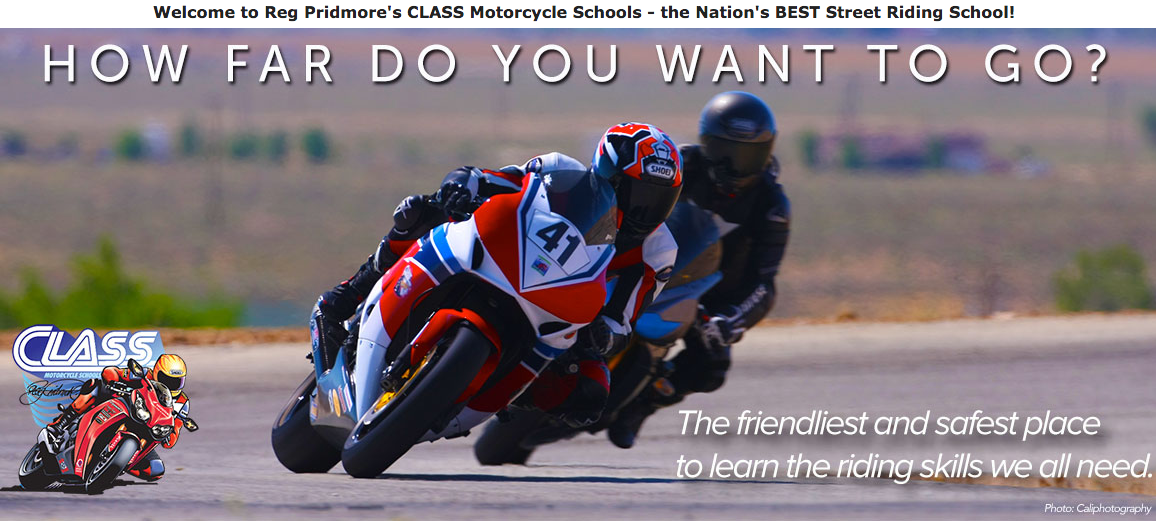It doesn't matter what you ride. Watch this video and you'll learn a thing or two about riding your motorcycle, I guarantee it. Smooth lines, perfect setups, a wonderful pace and exquisite technique. I found myself sitting on my couch leaning left and right to see if I could keep up with him.... ;-)
Why Motorcycle Seat Heights Are Overrated
Me, in 2014 riding an almost impossibly tall DRZ400SM. ~36" seat height with the knobby tires and me barely compressing the suspension.
So you're shopping for your first sportbike, or you're thinking about upgrading to a taller, heavier, faster bike? What does seat height really mean? Does it matter whether the bike is a V-Twin, L-Twin, Inline-4 or Single Cylinder engine? What exactly am I looking for beyond seat height? Does the suspension matter? These are all questions you should be asking, and you will want to ask to consider whether or not that bike really fits you.
Stop letting seat height be your only determining factor when considering what to ride!
When you initially look at seat height, say on a 2017 Suzuki SV650A (which is 30.9"), you need to know that this measurement is taken when there isn't a body sitting on it. It's simply obtained by measuring with a tape measure from the ground to the top of the seat.
2016 Suzuki SV650: Seat Height, WITHOUT YOU ON IT!
But when a person (of adult size and stature of course) sits on this bike, the rider may make the rear shock compress, which can result in an overall reduction in seat height (for me that was ~0.75" when I put in a softer spring on my Triumph). Let's go off on a little tangent here for a second.
When you're a small person like myself (130lbs, 5'2"), there are VERY few 600cc-1,000cc sportbikes/touring bikes that are designed for me to sit on the bike and compress that rear spring (if you aren't doing this, then the bike isn't set up correctly for you). And my Triumph definitely falls into that category. The stock rear shock was really meant for a heavier rider, about 150-160lbs to shmush that spring.
This is what suspension gurus (thanks Ken!) call SAG. For a more in-depth explanation of how this all works, read this.
The original rear shock that came with my Triumph before I got a customized Ohlins.
So what did I do to resolve this issue? I married a wonderful man a long time ago who bought me a used Ohlins Racing shock for my 40th birthday that I then had resprung (essentially traded in) with a new spring that was much softer and would compress (sag) under my little weight.
No, that didn't mean I could flat foot my Triumph (and I never will!). But it did mean that when I put my left foot down I didn't have to shift my butt over to the left to get it completely flat. I would say easily, a half inch lower, maybe almost an inch. And having YOUR body sit lower in the seat is far better than having the bike itself lower to the ground (for clearance, especially while LEANING which is the whole point of riding a sportbike! Otherwise, you may want to consider a cruiser because frankly they're just not meant to lean over very far).
If I had gone the lowering route, there's absolutely no way I could lean over on my bike in a corner like this. As you can see, I'm definitely NOT dragging my knee, as I'm not leaning that far over. Bottoming out is a very real risk aside from the performance issues, that come along with lowering your sporty bike. Photo: Killboy.com
So consider the suspension on the bike, on top of the seat height. How stiff is it? Where did the rear shock come from? Was it added on afterwards? Are there any adjustments that can be made now that you are going to ride this bike? If you don't address suspension from the beginning, it can greatly impact your ability to ride the bike, your perception of what you think you can ride and your overall experience.
If you don't have the funds to customize your suspension, your bike probably has at the minimum, the ability to adjust the Preload. In this handy guide from Sport Rider Magazine, they have a simple definition. If you lessen the Preload, that can also result in an immediate drop in seat height! When I bought a Kawasaki Z750S about 10 years ago, it felt a tad taller than I was ready for. But my mechanic was able to drop the Preload and bring it down to the lowest point which immediately made me feel much more comfortable. I'd say it lowered me a good 0.5" overall. (Certainly not near flat footing but at least I got the balls of my feet down instead of tip toes, and almost a flat left)
So assuming that the bike you want has a shock that's set in the range of your weight, and you have the option to adjust the Preload, you've immediately lost a good chunk of seat height. On that SV650A, I'd say you could easily chop off at least a half inch, if not an inch depending on the combination of Preload adjustment and rear shock compression.
There's also the issue of the bike itself. Now, look at the SV650 and look at my old blue Kawi above. Look at the engine. What's different? Well, first off the Kawi is a 4-cylinder, also known as an Inline-4. That makes for a MUCH wider engine overall than the SV650, which is only a 2-cylinder! And, see how they lay the cylinders at an angle on the Suzuki? That's why it's called a V-Twin. Now you've lost half the thickness of the bike between your legs. What just happened? Your knees are much closer together than on the Kawi. So when you go to put your feet down, they'll also be a bit closer to the ground because there aren't 2 more cylinders in your way. Also notice how the seats on both bikes are tapered as it gets closer to the tank. This is a good thing because again, now your knees are much closer. It's not just height that keeps your feet from reaching the ground.
Specs for the 2017 Suzuki SV650A, from SuzukiCycles.com
Another thing to consider that you will (yes you really need to) be wearing proper motorcycle boots. Not sneakers, not flip flops, not loafers. Real riding boots. Something that has a real sole, grippy, anti slip and probably ~1-2" higher in the heel. Leverage is one of our most important friends as shorter riders. Without it you are screwed. (Pssst..Stop trying to ride a motorcycle without the right gear. It's a real motorcycle, not a video game :D)
A very good example of this is the Daytona Ladystar. But you may not even need something that tall.
You may just need a regular riding boot like these Sidi Vertigo Leis, (left) which I wear every time I go riding. And even these have ~3/4" heel on them. So add that to your natural inseam.
I've also added these awesome insoles which give me another 2" of overall height! HELL YES.
Available on Amazon.com. Just do a search for Height Insoles or Lifted Insoles and you'll find a ton on Google or Amazon.
So all I'm saying is, DON'T GIVE UP just because some numbers tell you that you should! If you've been riding something for awhile and are ready for the next level, then some of these things will greatly apply to what you're thinking about riding.
Or, as a totally new rider you will also be thinking about what you can or can't ride. So make sure you start AT YOUR EXPERIENCE LEVEL. I can't emphasize this enough.
I truly think this is the #1 mistake people make (aside from not gearing up). When you start on a bike that is well beyond your level, you have no idea how to compensate for the lack of height. Instead you end up frustrated, stressed out, unhappy and probably someone with very poor riding skills as you drop your bike left and right.
A couple of caveats however, with all this advice:
- Don't expect to ride a bike with a really tall inseam (~3-6" taller than yours) if you've never ridden before! Because, no, that won't work!
- And there are NO shortcuts to becoming proficient in riding and getting better at riding. When we are short, we must ride better:
- With more precision than anyone else to ensure we brake perfectly so as to prevent dropping the bike. This means clutch/throttle control, exceptionally smooth braking and cornering, etc.
Also read this article I wrote about all the bikes I've ridden in my brief career as a motorcyclist. There are a few other things to think about when choosing the right motorcycle as well.
Good luck, and remember to consider everything when shopping for a motorcycle. Don't let anyone make a decision as personal as choosing YOUR motorcycle or motorcycle gear.
Taller Motorcycle Boots for Women
NOV 2019: PLEASE READ MY UPDATED POST HERE.
If you're looking for boots that offer a little extra height (and traction) to give you more leverage and confidence while riding, as well as protection, here are some ideas.
Options 1-3 are fully lined with Gore-Tex, considered to be the most breathable, waterproof membrane you will find in footwear.
1/ Daytona Ladystar GTX
$449. My favorite recommendation (and most expensive, unfortunately) are the Daytona Ladystar GTX's above. Yep, you get *that* much extra vertical height. Definitely the tallest women's motorcycle boots on the market that I've seen so far that also provide plenty of protection for street riding. You can read my review here. Two places to buy these online; Helimot or Revzilla. Pick your poison! Daytona also makes the same boot for those of you over a size 40, called the MStar (typically marketed towards men, even though its the same exact boot).
2/ Dainese Siren WP
$249. Although the Siren doesn't feature Gore-Tex, it's waterproof and breathable per Dainese. Also, the Siren has a very generous calf space, so this is a great boot if you need a little more room. Remember that Dainese's fit profile is a little narrower everywhere (except the calf). I've included a photo showing where your foot will be once inside the boot (0" mark). So that's almost 2.5" of extra height. You will get the same height on the Svelta (#2) and Luma (#3) as well.
$249. The Luma isn't a full height boot, but falls just below your calves. The height on these and the Siren will be the same.
3/ Dainese Svelta GTX
$269. I love the Svelta because it actually doesn't have a large calf space since it zips all the way to the top. I don't need extra room there, so for me, it's the perfect boot. If you have a slender leg then you'll like the streamline fit on the Svelta. Another fabulous Gore-Tex lined boot!
4/ Alpinestars Stella Gran Torino GTX
$299. The Alpinestars should have a slightly wider footbed and slightly larger ankle space. A good amount of calf space is provided as well.
5/ Sidi Livia Rain
$230. Sidis have a more generous fit all around than options #1-4, especially the ankles / heels and arches (better for high arches). They're incredibly comfortable as well, and also have a very generous calf space. As generous as the Sirens (#2), maybe even a tad more.
For those of you that can't afford a new pair of boots, here are two ideas:
Try new insoles to add height and / or comfort. Dr Scholls, Superfeet, etc. I also wear Sidi Vertigo Leis but they took away from my vertical heiaght so I couldn't get my heel down at all. So I added another insole, and a heel cup to give me an extra inch. It also made working all day in them far more comfortable.
Try checking eBay. I found a barely used pair of Daytonas on eBay for less than $100 because I set up an alert to let me know if someone posted a pair in my size. It took a year, but a year later I found them!
Advanced Riding Skills with Reg Pridmore
I know what you're thinking. But I don't need a track day. And you're right, you don't. Instead, you need Reg Pridmore.
I loved the track day that my husband and I did last September. But as a 'Training' environment, for street specific skills and riding, I didn't feel like it was the best option.
That's why I really want to do Reg Pridmore's Class School. I feel like his homepage says it all:
"The friendliest and safest place to learn the riding skills we all need."
"At CLASS, Reg Pridmore focuses on teaching you how to become a smoother safer and more confident rider with instruction on more effective braking, shifting, cornering and how to avoid some pitfalls that often occur as a result of bad habits (even those you might not know you have)."
These two things are what make this kind of class totally different from a track day in my opinion. If you read through the FAQs, you'll see what the format is and how the class is set up.
My husband and I will probably shoot for the October class and by then we hop to have a different car that we can tow our bikes down to. Although, I'm still trying to convince him to ride down but, it's generally safer to drive your vehicle to a track class.. Hmmmm.
Whatever you do to increase your skills, just make sure it's a safe learning environment and not designed to outspeed eachother. There are quite a few different advanced courses out there if this is too far away for you. I've collected a few on my resources page for you.

